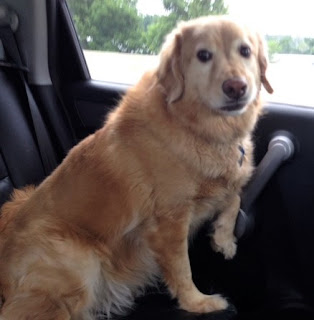B is for Bud, Part 1 - by Nan Brooks
When Eleanor Roosevelt was a young bride and having
difficulty making conversation at fancy dinner parties, her mother-in-law
suggested she use the alphabet and just pick any subject beginning with, say A.
Then Eleanor could ask, for instance, “Have you ever been to Alaska?” I have now exhausted my repertoire of
subjects beginning with A – not that I expect you to care, dear Reader – so I am
moving on to the letter B. Kind of like Sesame Street, but without the fun Muppets. In their stead, I offer you Bud.
We had been on the phone for hours, my old friend Margarette and I, she in Kansas and I in Indiana. When we agreed it was time to hang up. I said, “May you sleep well and wake refreshed and may tomorrow bring you wonderful surprises.” The next day, Bud arrived. I don’t think it was a coincidence.
Margarette worked
with wounded, ill, and injured soldiers and had been tasked by the commander in
charge of the Warrior Transition Battalion to begin an equine therapy program.
This proved to be far more complicated than the commander understood and it eventually
became apparent that it was impossible. Then he suggested a service dog for the
unit, but a service dog is specifically trained and assigned to meet the particular
needs of one individual, so that wasn’t going to work either. And service dogs
are costly, which is understandable given the training involved. The officer
was getting frustrated and Margarette had been trying to figure out a solution.
The day after our phone call, she met with the commander who said, “Are you
ready for your therapy dog?”
It turned out
that the commander’s wife volunteered at a local animal shelter and a dog had
been brought in who had been on the streets, probably for months. Fortunately,
the dog had an identifying chip and it turned out he had been assigned as a
therapy dog to a soldier who was later discharged. No one knew where the
soldier had gone, but here was his dog. The commander’s wife remembered him as
a puppy, so she called her husband and said, “He would make a great dog for the
Warrior Transition Battalion.”
So, there
was Margarette, sitting in the commander’s office and it was clear she was
expected to say yes. They worked out the details in short order. The dog had to
belong to one person, so he would be hers, he would live with her and she would
assume all expenses for his care. On her lunch hour that day, she went to get
the dog and discovered that his name was Bud – or maybe Buddy. She settled on Bud and took him back to work
with her.
From that
moment on, Bud went to work every day. He had – and still has – an uncanny ability to
understand when someone needed comforting. Sometimes a soldier would come to Margarette’s
office and say, “I don’t want anyone near me – stay out of my bubble.” The soldier
would sit stiffly in a chair, arms folded across his chest, shoulders hunched,
scowling and clearly suffering. Bud would come from behind his favorite napping
spot behind Margarette’s desk and rest his nose on the soldier’s knee. Slowly the soldier’s shoulders would drop, he
would relax more and more and, when Bud was satisfied that his “treatment” had
worked, he would lie down and rest his chin on the soldier’s foot.
There wasn’t
a lot of laughter in the unit, which is easy to understand given the serious
problems the soldiers and those who cared for them endured. But after about a
week, Margarette would hear laughter in the hallway. When she followed the
sound, there she would find Bud, being his goofy self and making things a
little easier.
I aspire to
be like Bud.
Next time:
Bud’s Daily Rounds

Such a sweet story - and well-told!
ReplyDelete